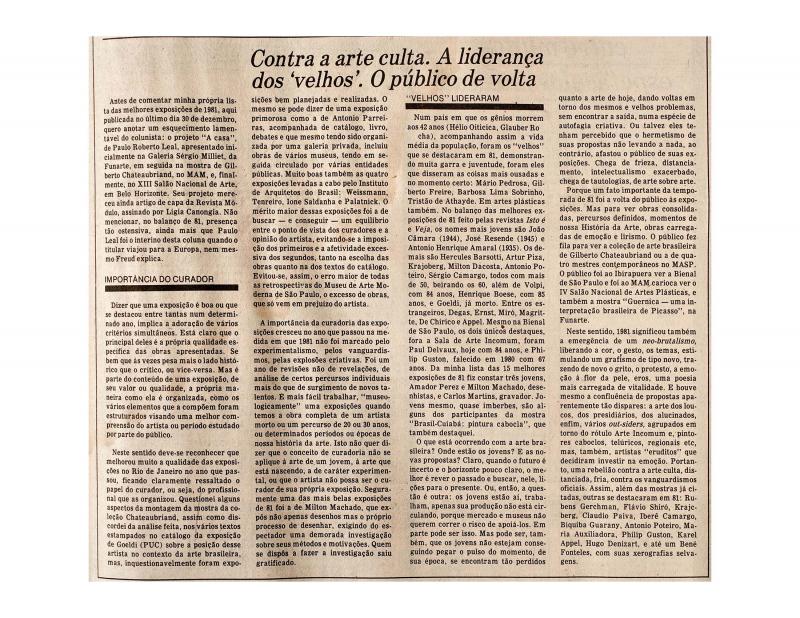Curated by Frederico Morais, the exhibition O artista brasileiro e a iconografia de massa opened on April 18, 1968, at the Escola Superior de Desenho Industrial in Rio de Janeiro. The works selected develop diverse themes including popular music, television, the police, politics, and sports. The exhibition was fortified by an array of lectures: by the theater director José Celso Martinez Corrêa, the filmmaker Cacá Diegues, and the journalist Fernando Gabeira (before he went into exile), among others. Morais highlighted the following artists: Maurício Nogueira Lima, Nelson Leirner, Marcello Nitsche, Geraldo de Barros, Cláudio Tozzi, Rubens Gerchman, Maria do Carmo Secco, Antonio Dias, Glauco Rodrigues, Carlos Vergara, Hélio Oiticica, and Antonio Manuel. This exhibition was presented in the pivotal year of 1968, only months before the government of the military coup d’état would decree Institutional Order No. 5 (AI-5), repealing all the rights of Brazilian citizens. During the subsequent years, Morais underwent an evident change of outlook. In the early 1970s, the work he was doing for the Museu de Arte Moderna-Rio made him optimistic. This was a series called Domingos da criação (see “O público: o exercício da liberdade” at the ICAA digital archive (doc. no. 1110476)]. By the 1980s, two decades after the imposition of the dictatorship, Morais was taking positions that were much more pessimistic. The theory underlying his analysis of art in the 1980s had more to do with public acceptance. That was when he started defending the use of more traditional materials by this generation, which carried on a debate through its painting, as seen in “Contra a arte culta. A liderança dos ‘velhos’. O público de volta” (doc. no. 1110553). Frederico [de] Morais (b. 1936) is one of the outstanding personalities among art critics in Brazil. As a journalist, he worked as an art critic for many years for Diário de Notícias and O Globo. He was one of the most active “committed” critics in the 1960s and 1970s, supporting various avant-garde movements and exhibitions during that period as well as serving as a curator for some of the exhibitions.


